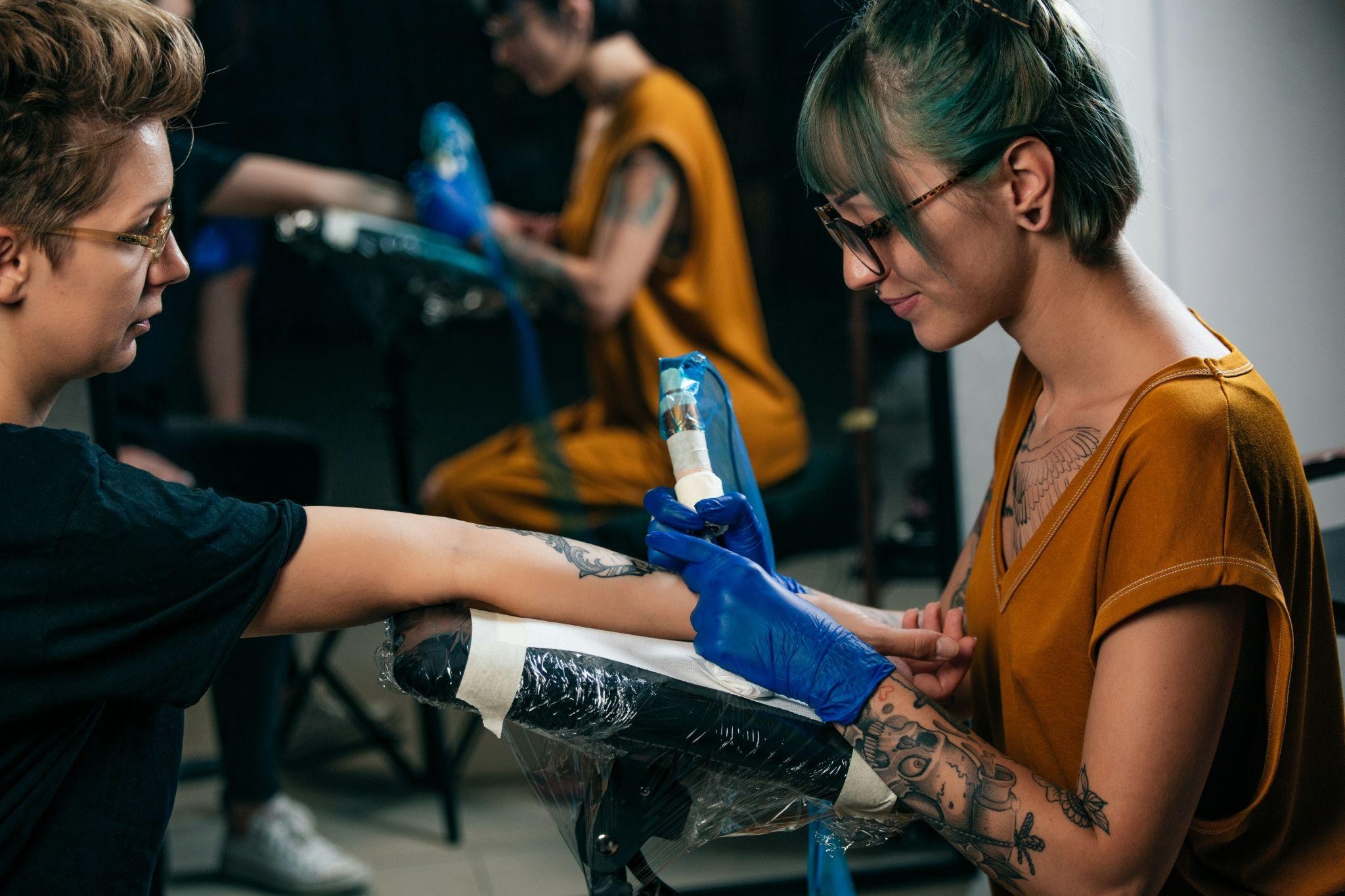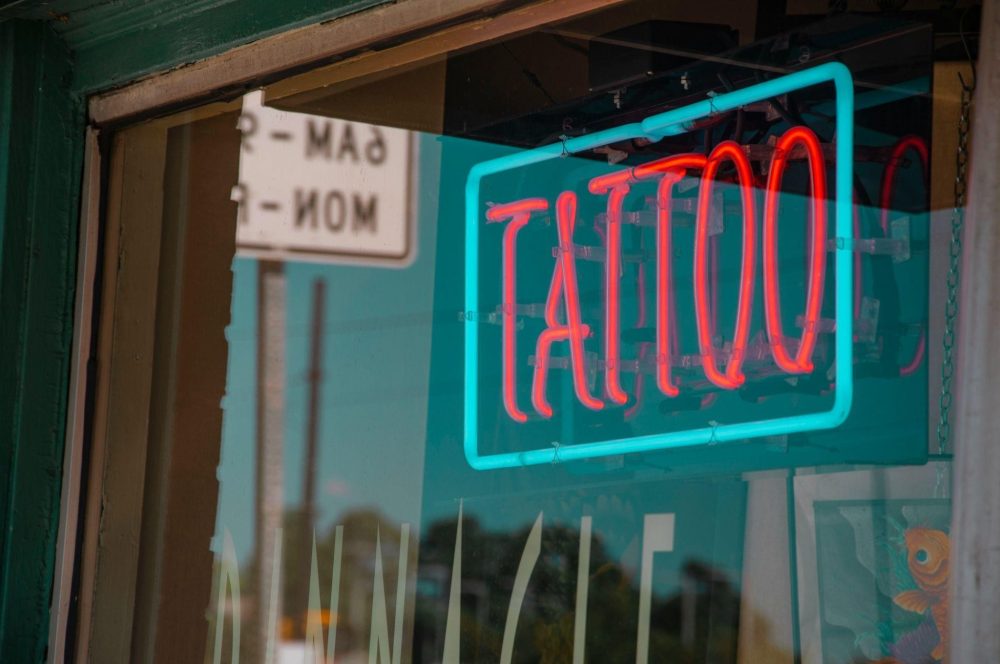We all know that tattoo is one of the oldest art forms in the world, dating back to ancient Egyptians. It has been practised for thousands of years, with various purposes, from religious rituals to personal expression. While tattoos themselves have always been around, the idea of dedicated tattoo shops is a more recent development. This industry has gone through a fascinating transformation, evolving from underground establishments to respected art studios. This blog explores the journey of tattoo shops, tracing their rise from obscure origins to the thriving studios they are today. Let’s dig in:
The History
Ancient Practices
There is evidence proving that tattoos have existed for centuries via the body markings found on mummified remains dated between 3370-3100BCE. It is said that early tattoos were done in alleyways with needles dipped in charcoal soot or indigo powder without any means of sterilisation.
Emergence of Specialised Tattoo Artists
While ancient tattooing was primarily done in homes, roadsides, villages, or even in sacred spaces, the concept of dedicated tattoo artists slowly emerged in the 19th century. Tattooists were often travelling professionals, offering their services to sailors, soldiers, and adventurers. These early artists would carry their tools from place to place, setting up temporary workstations in inns or ports back then.
Establishment of Permanent Tattoo Shops
One of the first recorded tattoo shops was opened by the Razzouk family back in 1300 in Jerusalem. Surprisingly, it has been continuously operating since then for over 700 years. They’ve been using centuries-old woodblock stamps as stencils, which are then tattooed over using a tattoo gun. This marks the beginning of tattooing as a recognised profession, setting the foundation for the modern tattoo industry. Shops like this played a crucial role in shaping the industry, preserving tattoo culture through decades of societal changes.
Apart from this, another ancient tattoo shop was opened by Martin Hildebrandt in New York City in 1846 or 1870. This is known as the first permanent tattoo shop. Hildebrandt was a German immigrant who became one of America’s earliest professional tattoo artists. His shop catered primarily to military personnel, who saw tattoos as symbols of camaraderie and personal identity during WWII. With that, more tattoo shops started opening up.
The 1st Revolutional Technological Advancement
In 1891, Samuel O’Reilly invented the electronic tattoo machine that revolutionised the whole industry. This made tattooing faster, less painful, and more precise. With the development of this new tool, tattooing became more accessible and efficient, allowing for the growth of permanent tattoo parlours. Artists no longer had to rely on crude, manual methods, and intricate designs became more achievable.
Tattoo Shops in the Early 20th Century
By the early 1900s, tattooing had moved from elite circles to a subculture associated with sailors, circus performers, and the working class. The perception of tattoos shifted depending on the region where some saw them as symbols of rebellion, while others viewed them as expressions of personal stories. Tattoo shops were often hidden away in sketchy alleyways or near docks, catering to niche clientele.
Mid-20th Century Challenges and Resilience
Societal Stigmas
From the 1930s to the 1960s, tattoos carried a reputation of being rebellious and even undesirable. Many mainstream companies refused to hire tattooed individuals, reinforcing the idea that tattoos were for outcasts. Despite this, tattoo shops continued to operate, serving a dedicated underground community.
Regulatory Hurdles
Some cities imposed strict regulations or outright bans on tattooing. New York City, for example, banned tattooing from 1961 to 1997 due to health concerns. Tattoo artists either operated illegally or moved their businesses to neighbouring states. However, these restrictions did not kill the industry; instead, they made it more exclusive and fuelled its underground appeal.
The Tattoo Renaissance
Cultural Shifts
The 1970s and 1980s saw a cultural transformation. The counterculture movement embraced tattoos as symbols of individuality and self-expression. Rock stars, punk musicians, and bikers proudly displayed their ink, inspiring more people to break free from traditional beauty standards. This era marked the beginning of tattoos becoming mainstream.
Evolution of Tattoo Shops
Tattoo parlours gradually transitioned from back-alley operations to professional art studios. Hygiene standards improved, and artists focused on perfecting their craft at a stable tattoo studio. Tattooing was no longer seen as a reckless decision but as a serious artistic work. This shift led to a broader acceptance of the tattoo culture we see today.
Modern Tattoo Shops

Diverse Clientele
Today, tattoo shops serve various clients, from young professionals to celebrities. Tattoos are no longer limited to subcultures. They are now a form of personal art, accepted by people from all walks of life. Many shops cater to specific styles, allowing customers to find artists that suit their aesthetic preferences.
Artistic Innovation
Modern tattooing has expanded beyond traditional designs. Artists now include realism, watercolour techniques, and even 3D effects. The artistry behind tattoos is also widely respected, with tattooists gaining recognition as true artists. Plus, many shops even operate like galleries, showcasing intricate and thought-provoking pieces.
Technological Integration
Technology has played a significant role in the evolution of tattoo shops. Today, digital design tools help artists create precise previews of tattoos before inking. Social media and online portfolios help tattooists attract the global market. Even AI-generated tattoo designs are becoming part of the industry, expanding creative possibilities further than we ever imagined.
The Future of Tattoo Shops
Wondering what the future holds for tattoo shops? Well, currently tattooing has become a global industry, with artists drawing inspiration from different cultural traditions. Cross-cultural exchanges have enriched the field, leading to new styles and hybrid techniques. In fact, events like the international tattoo conventions are conducted, letting artists showcase their work and collaborate with peers worldwide.
The tattoo industry is always evolving. Innovations in ink technology, pain reduction methods, and aftercare products continue to improve the tattooing experience. As society becomes more accepting of body art, tattoo shops will likely become even more mainstream, with a greater focus on customisation and client experience. isn’t that amazing?
Wrapping Up
Tattoo shops have come a long way from their early days as underground establishments. They have survived social stigmas, legal battles, and changing trends to emerge as respected artistic studios. Today, they are vibrant, professional spaces where people can express themselves through body art. As the industry continues to evolve, one thing remains clear: tattooing is more than just ink on the skin. It is a form of storytelling, identity, and cultural expression that will continue to thrive in upcoming generations.






Pingback: sans ordonnance kamagra pharmacie en ligne en suisse generique
Pingback: buying enclomiphene generic canadian
Pingback: ordering androxal generic india
Pingback: ordering flexeril cyclobenzaprine purchase from uk
Pingback: purchase dutasteride cheap with fast shipping
Pingback: buying gabapentin generic from india
Pingback: buy fildena cheap with prescription
Pingback: get itraconazole uk buy over counter
Pingback: online order staxyn new york city
Pingback: discount avodart generic low price
Pingback: get xifaxan generic efficacy
Pingback: online order rifaximin without prescriptions uk
Pingback: žádné předpovědi kamagra